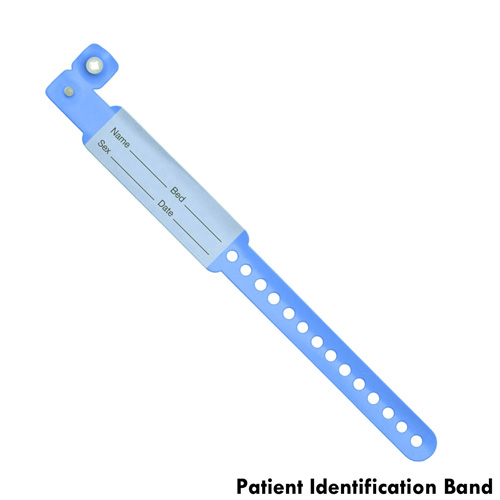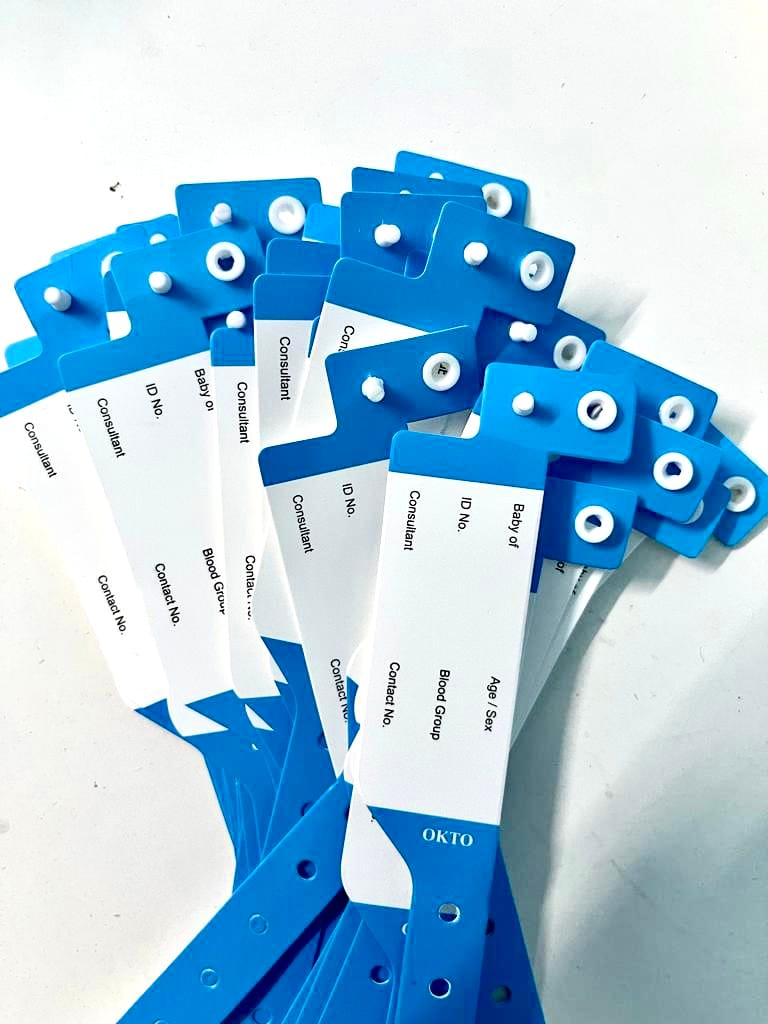Patient Identification Bands: A Trick Tool for Improved Medical Precision
Individual identification bands represent a critical element in the pursuit of clinical accuracy and individual safety within healthcare settings. The true extent of their impact on individual outcomes and general healthcare quality warrants further exam.

Relevance of Patient Identification
Patient identification is an essential element of healthcare that guarantees the security and accuracy of clinical therapy. Correct identification protocols are necessary to protect against medical mistakes, which can result in adverse patient end results, consisting of incorrect medicine management, misdiagnosis, or unacceptable therapy plans. The importance of accurate client identification can not be overstated, as it functions as the foundation for effective communication among healthcare companies.
In atmospheres where several clients are receiving treatment concurrently, the risk of identity complication increases. Carrying out robust recognition systems helps reduce these threats and boosts client security. Patient Identification Band. Moreover, accurate identification adds to the honesty of clinical records, making sure that patient histories, allergies, and previous therapies are appropriately connected to the best person.
Furthermore, conformity with regulatory standards and accreditation requirements usually mandates strict client recognition protocols, promoting a culture of responsibility and top quality treatment. Ultimately, the importance of patient recognition goes beyond mere administrative jobs; it is a basic facet of delivering high-quality medical care that focuses on individual security and boosts medical results. Buying reliable recognition techniques is not just valuable-- it's critical in today's complex health care landscape.
Sorts Of Individual Recognition Bands
In medical care setups, numerous types of person recognition bands are used to make certain exact recognition and improve safety. These bands work as an essential tool in preventing medical errors associated to individual misidentification.
One of the most usual type is the common wristband, usually constructed from sturdy plastic and printed with the person's name, day of birth, and an one-of-a-kind identification number. These wristbands are often color-coded to communicate specific info, such as allergies or various other clinical conditions.
Another kind is the barcode wristband, which incorporates a scannable barcode connected to the client's electronic health document. This modern technology enables efficient information retrieval and verification throughout medication management and other scientific processes.
Additionally, RFID (Superhigh Frequency Recognition) bands are coming to be significantly prominent. These bands can communicate wirelessly with hospital systems, enabling for real-time tracking and identification of individuals, consequently improving and enhancing workflows person security.

Benefits for Medical Care Carriers
Using person recognition bands provides substantial benefits for healthcare service providers, enhancing both operational efficiency and individual security. These bands work as an important tool in improving person monitoring processes (Patient Identification Band). By guaranteeing precise identification, doctor can reduce the threat of administrative mistakes, such as mislabeling samples or misdirecting therapies, which can result in expensive delays and issues
Moreover, person recognition bands assist in smooth interaction amongst the health care group. With readily available and standard client details, carriers can make enlightened choices swiftly, enhancing total process. This performance is especially important in high-pressure environments such as emergency departments, where time-sensitive treatments are crucial.
The execution of recognition bands also sustains compliance with governing requirements and ideal practices, thus lessening the threat of legal repercussions stemming from identification mistakes. The use of these bands improves information precision in electronic health and wellness records, leading to much better treatment coordination and continuity.
Influence On Individual Safety And Security
Precise person identification is a foundation of health care security, substantially decreasing the probability of mistakes that can endanger person health. Making use of person identification bands is essential in ensuring that each patient receives the correct treatment, drugs, and treatments. These bands serve as a reputable referral factor for healthcare professionals, minimizing the danger of misidentification, which can cause serious effects such as wrong medication administration or surgical errors.
The application of standard individual recognition bands adds to a culture of safety and security within medical care setups. By offering clear, quickly legible info, these bands help to enhance the relevance of validating person identity at every phase of care. Additionally, they promote communication amongst employee, ensuring that everyone associated with an individual's care understands their details requirements and requirements.
Additionally, making use of individual recognition bands can enhance the precision of digital health and wellness records, further minimizing the possibility for mistakes - Patient Identification Band. By prioritizing person security through efficient recognition methods, doctor can promote depend on and self-confidence among individuals, inevitably resulting in better clinical outcomes and boosted patient contentment. The effect of appropriate patient recognition can not be overstated; it is a fundamental aspect of high-grade healthcare shipment
Finest Practices for Implementation
Effective implementation dig this of person recognition bands is important for improving client safety and security and decreasing errors in medical care setups. Staff training is necessary; all team participants need to comprehend the value of precise person recognition and the procedures for band application.
Second, the style of the identification bands should prioritize visibility and durability. Bands should be very easy to check out, consist of necessary person info, and stand up to daily wear. Utilizing color-coding can better boost quick identification.


Third, integrating electronic wellness documents (EHR) with identification band systems can enhance workflow. Automated alerts for discrepancies in individual recognition can prevent potential errors prior to they take place.
Lastly, carrying out routine audits and read more responses sessions will help identify locations for improvement. Involving team in these discussions fosters a society of security and responsibility.
Verdict
In verdict, person recognition bands play a vital function in enhancing medical accuracy and guaranteeing person security within health care systems. Adopting ideal practices for implementation cultivates a culture of safety, inevitably leading to improved client outcomes and greater count on in healthcare solutions.
Client identification bands stand for a crucial part in the pursuit of clinical accuracy and person security within medical care environments.Making use of person identification bands uses significant benefits for healthcare service providers, improving both functional effectiveness and client safety. By focusing on client safety and security with effective recognition methods, healthcare carriers can Source promote trust and self-confidence among clients, ultimately leading to much better professional outcomes and enhanced patient satisfaction.Effective execution of client recognition bands is crucial for improving person security and lessening errors in healthcare setups.In verdict, person identification bands play an important duty in boosting clinical precision and guaranteeing person safety within healthcare systems.